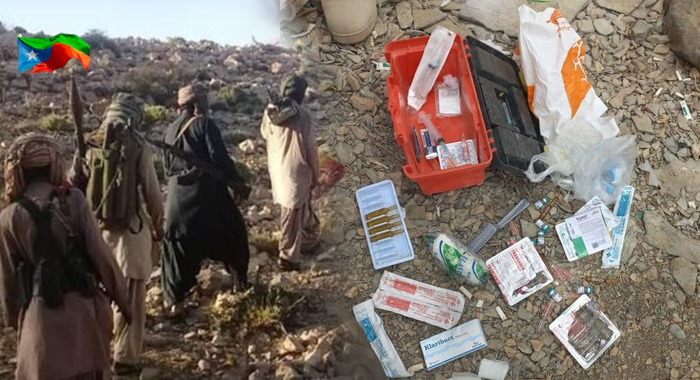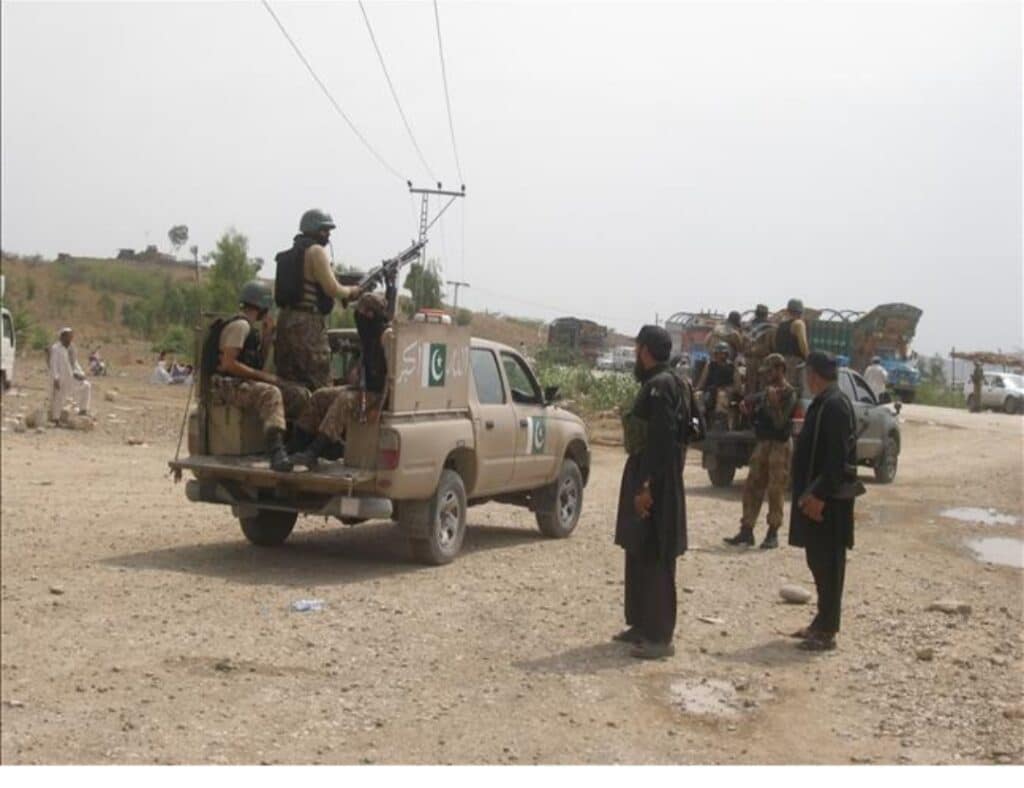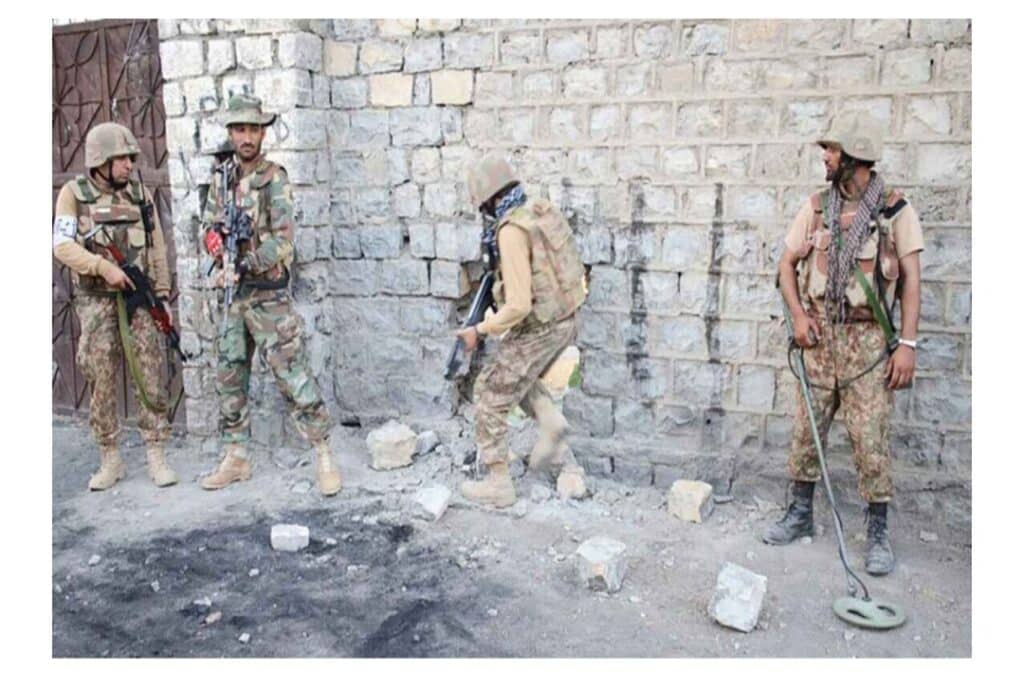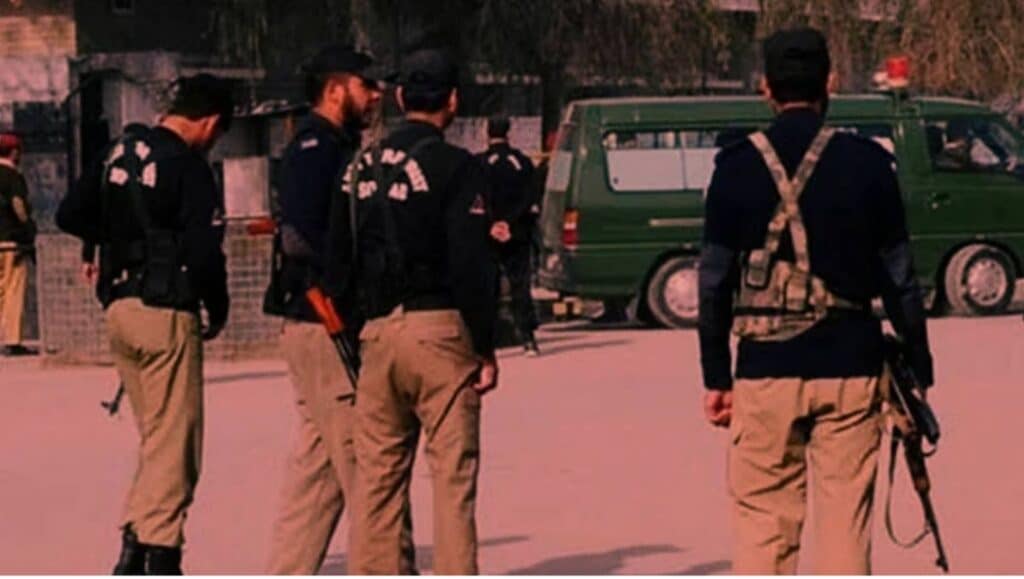In the scorched hills of Balochistan’s Nushki district, Pakistani forces uncovered a hideout long used by terrorists of Fitna al-Hindustan (FAH) or the banned Baloch Liberation Army (BLA). What they found inside wasn’t just the expected ammunition or propaganda leaflets. What lay scattered on the rocky ground, a red medical kit, crushed ampoules, half-used syringes, and empty blister packs, tells a darker, more complex story: FAH’s war is not just fought with guns, but with drugs.
To the untrained eye, the items resembled a typical field medic kit. But closer inspection, and mounting intelligence, reveal them as part of what security analysts are now calling “combat doping kits.” These are carefully curated bundles of controlled substances used by militants to suppress pain, dull fear, and enhance aggression during prolonged firefights.
While pro-militant social media pages like Balochistan Facts have dismissed these findings as “innocent pain relief,” the real composition and purpose of these drug kits expose a disturbing truth: the BLA’s battlefield resilience is chemically induced.
Tramal Plus: The Battlefield’s Designer Drug
The most dominant drug recovered from the site is Tramal Plus, a potent combination of 225mg Tramadol (a synthetic opioid) and Paracetamol. Tramadol belongs to the same pharmaceutical family as morphine and codeine, but with a critical difference: it’s cheap, widely available in Pakistan, and dangerously underestimated.
Tramadol’s dual effect, numbing pain and creating emotional detachment, makes it ideal for terrorists. Under its influence, a fighter can endure serious injury without reacting, suppress natural instincts of fear, and commit atrocities with chilling detachment. In essence, it turns pain into a background noise, and conscience into a void.
Globally, Tramadol has already gained notoriety. In 2017, Italian police intercepted a shipment of 24 million Tramadol pills en route to ISIS in Libya. In 2020, INTERPOL’s Operation Lionfish seized over 20 million more tablets from extremist networks in North Africa and the Gulf. The same patterns appear across Africa and South Asia, from Boko Haram to Taliban offshoots, militants rely on Tramadol not just for survival, but for performance.
Pakistan’s own Drug Regulatory Authority now classifies it as a controlled substance with high addiction potential. Customs authorities seized a multi-million pill shipment from India only months ago — a bust linked by analysts to terror financing networks.
The BLA is no exception. Tramal Plus is now viewed by security agencies as a signature of their operating behaviour.
The Dark Chemistry of ‘Tiryāq’: From Persian Cure to Balochistani Poison
In local parlance, terrorists often refer to their war-drug cocktails as ‘Tiryāq’, a term historically used in Persian medicine to describe a universal antidote. Ironically, what once meant “cure” now refers to a highly addictive blend of synthetic opioids and sedatives, mixed together when raw opium or heroin is unavailable.
This chemical ‘Tiryāq’ is concocted in hideouts and safe houses. Pills like Tramadol are crushed and dissolved in cough syrup, antihistamines, or even antibiotics to create a liquid that mimics the warm euphoria of heroin. Fighters inject or drink this mix before ambushes or raids, not for treatment, but for mental escape.
According to intelligence gathered in Panjgur, Kech, and Nushki, this “pill addiction” has become a silent epidemic among BLA foot soldiers. Far from ideological purity, what sustains them through 10-hour firefights and torture killings is a cocktail of pharmaceutical numbness.
The ‘Innocent’ Drugs That Turn Deadly in Combination
The red medical kit uncovered in Nushki didn’t just include Tramal Plus. It was a chemical arsenal:
Klaribact (Clarithromycin):
A powerful antibiotic that dangerously inhibits the liver enzyme CYP3A4, which the body uses to metabolise Tramadol. The result? Toxic Tramadol levels in the bloodstream, leading to sedation, respiratory suppression, and even coma. Mixed intentionally, it intensifies the “high”, but at great risk.
Diazepam and Pheniramine Injections:
These sedatives are added to boost the euphoric effect and suppress physical tremors and anxiety. The combination has been described by neurologists as neurologically destabilizing, increasing the risk of seizures and memory blackouts.
Tranexamic Acid (Transmin):
Typically used to stop bleeding in trauma, this drug when paired with opioids increases blood clotting and stroke risk. In the heat of battle, its abuse can lead to sudden collapse.
Medical research consistently shows that high-dosage Tramadol abuse leads to serotonin syndrome, psychotic breaks, respiratory failure, and neurochemical dependency. It is not a soldier’s medicine — it is a crutch for the chemically broken.
Manufactured Bravery: The Propaganda vs. the Pills
For years, BLA sympathisers have framed their fighters as freedom-loving warriors driven by ideology. But the discovery of combat doping kits after nearly every major clash tells a different story. What sustains their fight isn’t belief alone, it’s biochemistry.
This truth is a threat to the BLA’s public narrative. If the world sees them not as noble guerrillas but as chemically-enhanced enforcers, the illusion of moral high ground collapses. That’s why Balochistan Facts and similar propaganda platforms scramble to explain away these medical kits as “basic pain relief.” But the combinations found, and their consistent recovery from militant caches, say otherwise.
The imagery of syringes among spent cartridges, red kits next to empty shell casings, these are the true emblems of the BLA’s battlefield. Their courage isn’t born of ideology, but of narcotic escape.
The Addiction Behind the Atrocity
In warfare, addiction is more than a weakness, it’s a chain. And the BLA, far from being unbreakable, is bound tightly by it.
The use of Tramadol and other controlled substances by its fighters represents not just a tactical choice, but a psychological dependency. One that makes them reckless, violent — and ultimately, fragile.
As more evidence emerges from Balochistan’s recovered caches and international trafficking routes, one thing is becoming clear: the BLA’s deadliest weapon isn’t ideology or firepower — it’s the lie of invincibility bought in pills and syringes.
And in the end, no high lasts forever.





